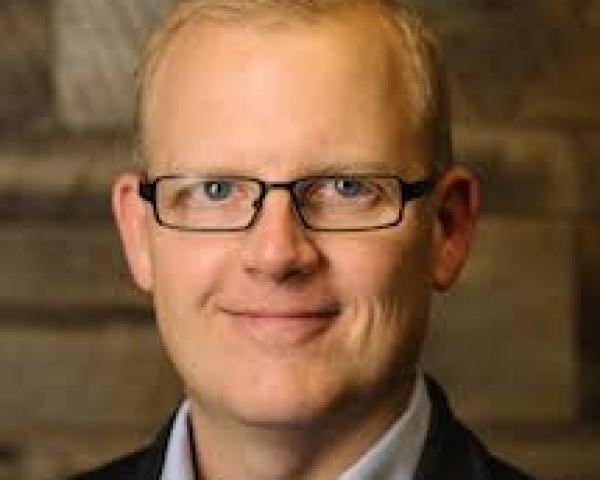The insurance industry has historically thrived on face-to-face interactions. A year ago, U.S. life insurance brokers told McKinsey that 90% of their sales conversations and even 70% of their customer follow-ups happened in person. Of course, those numbers plummeted during the pandemic: By May 2020, a follow-up McKinsey survey revealed that in-person interactions had dropped to less than 5%.
To maintain regular interactions with prospects that feel as meaningful and personal as formerly in-person conversations, insurance companies must turn to social media to meet audiences where they're socializing during the pandemic.
Over the last few years, however, the algorithms that govern organic content's performance on social media have shifted to make breaking through more difficult for brands. After all, social media platforms exist to make money, and their primary revenue stream is advertising dollars. Insurance companies that used to see engagement simply by posting on their business pages must now begin investing in paid advertising campaigns if they hope to achieve anything resembling earlier organic results.
Unfortunately, this trend is solidifying at a time when most insurance associates — indeed, most people in general — are stretched thin. Life insurance companies are busy handling a significant increase in demand for their services, and property and casualty areas are busy helping customers navigate changes in policies such as low mileage rebates.
Agents simply don't have the time to focus on marketing themselves right now. In this environment, insurance companies must support them by focusing on social media marketing efforts and examining ways to help agents cut through the noise and foster real, human connections online. These three strategies are excellent places to start.
1. First, equip agents with social selling.
To maximize a paid social strategy, agents need to be engaging with prospects and clients organically on social media first. Enable your agents to practice social selling — which means sharing branded content from their own profiles to their own networks.
A company's social accounts might offer some brand visibility, but associates have a far greater reach than your brand, and their followers trust their content much more than your company's content. When agents share helpful information that highlights their expertise, their networks will already begin to see them as trusted resources. This lays a solid foundation for launching a paid campaign with individual agents.
Of course, the last thing any insurance company wants to do is add more demands to their agents' already full plates. If you want employees to build their social presence organically, you have to make it as easy as possible. Marketing teams can build clear, comprehensive social media policies and train agents on them. Then, they can provide agents with a steady stream of engaging, curated content that aligns with the brand and interests agents' followers.
See also: Want to See Social Media Genius?
2. Then, tailor social selling with paid advertising.
Paid social should absolutely be a part of your 2021 advertising plans, but you should still incorporate elements of your organic social selling strategy — namely, the agents. Put your individual agents front and center in the ads targeted to the audiences in their respective geographic regions.
Consumers today expect this level of personalization. One report found that 72% of consumers will engage only with marketing messaging that's tailored to their interests, and Accenture confirmed that most are willing to share the data necessary for a more customized experience.
Ultimately, it's human nature to seek out person-to-person connections. People trust other people more than companies and brand names. Insurance companies should take every step possible to build, maintain and reinforce the human relationships that were the cornerstone of the industry pre-COVID-19, and getting individual agents in front of the right people on social media is a great way to highlight the human element.
3. Use software to control and expand your efforts.
Insurance companies can no longer rely on mass channels and one-size-fits-all campaigns to establish trust and convert clients. Personalized marketing efforts are increasingly complex, and they're best handled by marketers with central authority.
As agents deal with the same changes that are rocking the broader industry, they're relying on marketers to implement complex paid campaigns at the brand, branch and agent levels. That's a lot for one marketing team to handle, but social media management software exists to make it easier. The right tool can streamline and automate workflows, making sure no ad ever publishes without the correct approvals. This helps ensure each post is compliant and in line with your brand's style and voice. Software can also allow marketing teams to reach more people on more platforms with simultaneous multiplatform features, allowing campaigns to scale with ease.
With the operational details of executing a social strategy taken care of, marketers can focus more on arming agents with everything they need to create the types of meaningful, human connections that will foster trust and set the stage for strong relationships to come.
See also: How Social Selling Can Boost Results
The insurance industry upheaval brought on by COVID-19 has necessitated a stark shift in the industry's approach to advertising. Organizations must strive to build personal relationships and connections from a distance, but a branded organic strategy won't meet social advertising needs as algorithms evolve. Instead, the insurance companies that pivot to social selling, human content and solutions at scale will rise to the top of the news feed in the coming year.








